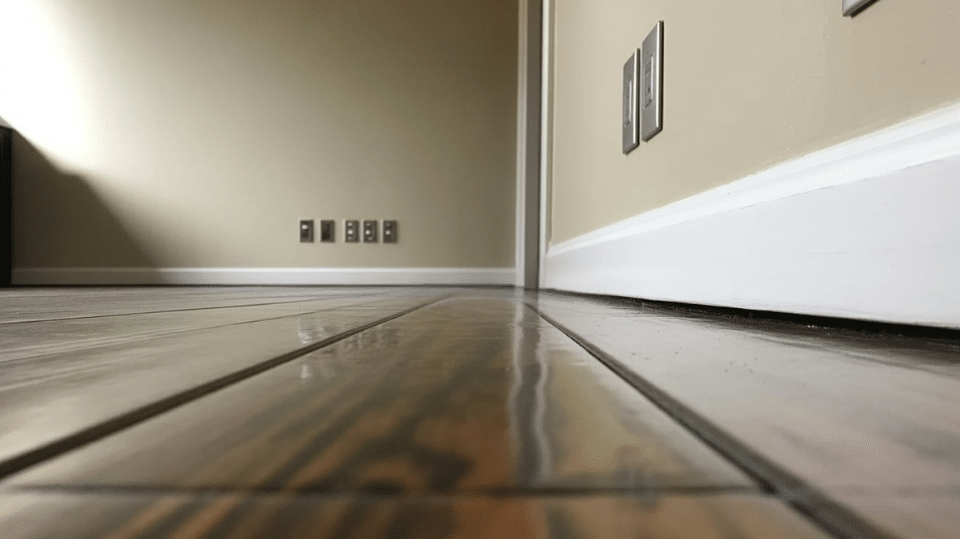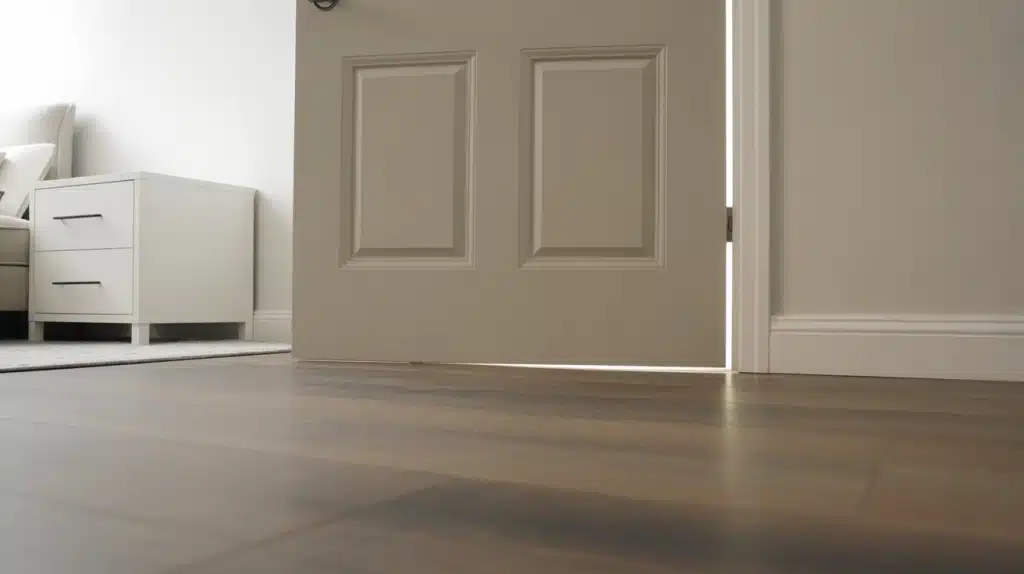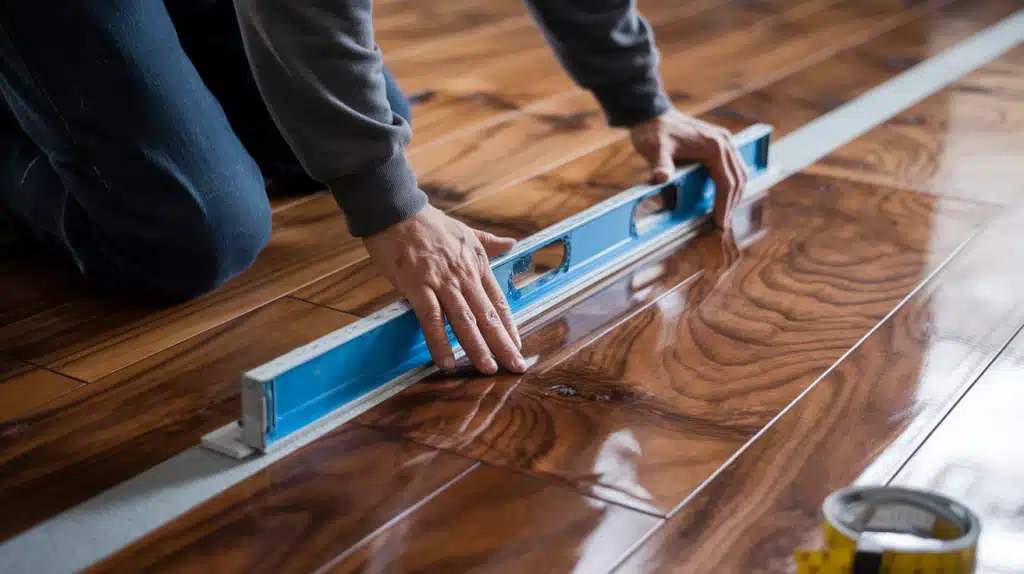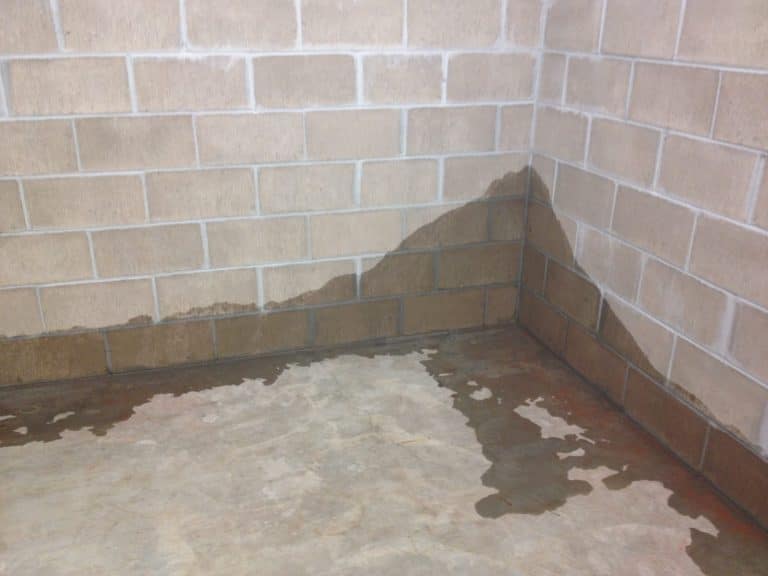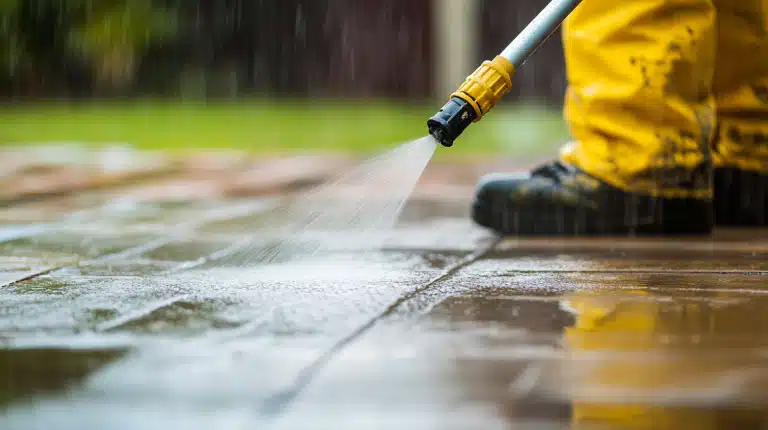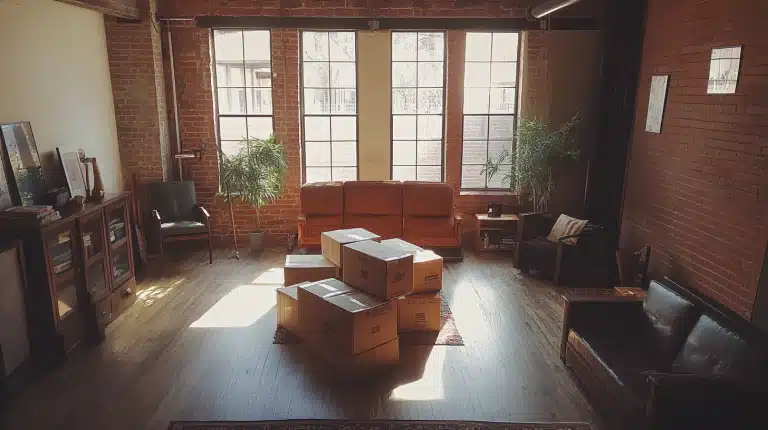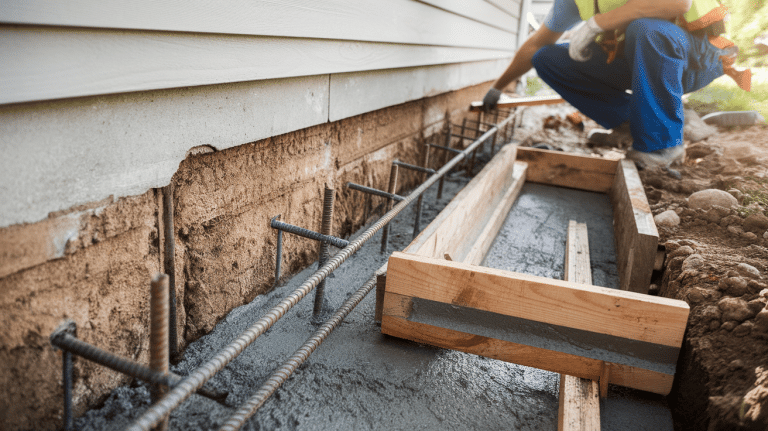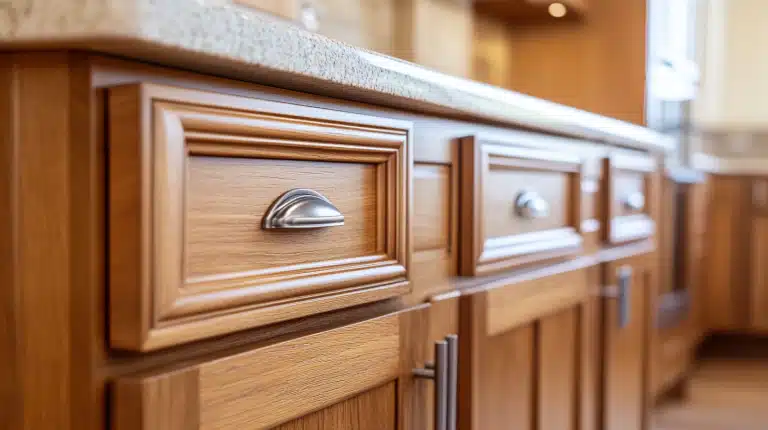Sloping Floors: What Causes Them and How to Fix Them Fast
Does your home have floors that feel uneven when you walk across them? Sloping floors are more common than you think, especially in older homes and basements.
These tilted surfaces can range from minor slopes that are barely noticeable to severe angles that cause furniture to slide and doors to stick.
Sloping floors signal underlying issues with your foundation, water damage, or structural problems that need immediate attention.
Left untreated, these floor issues can reduce your home’s value, create safety risks, and damage your belongings.
The good news? Most sloping floor problems can be fixed with the right approach.
This guide will show you how to identify the causes, understand the risks, and select the most suitable repair method for your home’s specific needs.
What Are Sloping Floors?
Sloping floors are surfaces that tilt or lean at an angle, rather than being perfectly level.
These uneven floors can range from minor slopes of 1-2 inches across a room to severe slopes of 4 inches or more, creating noticeable tilting.
Minor slopes might only be felt underfoot, while severe slopes cause furniture to slide and doors to stick.
Sloping floors most commonly occur in older homes built before modern foundation techniques were developed, in basements where soil settlement is frequent, and on the upper floors of multi-story buildings where structural supports may have shifted over time.
Common Causes of Sloping Floors
- Foundation Issues: Foundation settling occurs when soil beneath your home compresses unevenly, causing concrete slabs or basement walls to crack and sink.
- Water Damage: Persistent leaks from plumbing or roof damage can weaken floor joists, causing the wood subflooring to warp and sag.
- Poor Construction: Builders who use cheap materials or skip proper support beams create floors that cannot handle normal weight loads over time.
- Natural Settling: All homes naturally settle as the soil shifts due to weather changes, but excessive settling can create permanent floor slopes.
- Tree Root Growth: Large tree roots can grow under foundations and push against concrete, while also absorbing moisture that causes soil to shift beneath your home.
What Are the Risks of Sloping Floors?
Sloping floors can lead to structural damage, safety hazards, reduced property value, and potential damage to furniture and other household items. If left unaddressed, they can compromise the overall integrity and stability of your home.
1. Structural Damage
Sloping floors put extra stress on your home’s frame and can cause walls to crack or bow outward. Load-bearing beams may fail under uneven weight distribution, leading to serious structural problems.
Over time, this damage can spread throughout your home, making repairs much more expensive. Ignoring sloping floors often results in door frames becoming warped and windows that won’t open properly.
2. Safety Hazards
Uneven floors create tripping risks, especially for elderly family members or guests unfamiliar with your home’s layout. Furniture and appliances can slide unexpectedly, potentially causing injuries or blocking emergency exits.
The constant need to adjust your balance while walking can lead to ankle injuries and falls. Children and pets are particularly vulnerable to accidents on severely sloped surfaces.
3. Decreased Property Value
Home inspectors always flag sloping floors as major concerns, which can reduce your property’s market value by thousands of dollars.
Potential buyers often walk away from homes with floor issues, fearing the expense of repairs. Real estate agents report that visible floor problems make homes sit on the market much longer than comparable properties.
Even minor slopes can trigger renegotiation of sale prices or demands for repairs from buyers.
4. Damage to Furnishings
Refrigerators, washing machines, and dishwashers won’t function properly on uneven surfaces, leading to premature breakdowns and voided warranties.
Furniture legs can crack or break under constant stress from trying to balance on sloped floors. Cabinets and built-in shelving may pull away from walls, creating gaps that collect dust and pests.
Pool tables, pianos, and other precision equipment become unusable without expensive leveling modifications.
How to Fix Sloping Floors
Fixing sloping floors typically involves consulting a professional to assess the cause, then choosing repair methods such as underpinning, slab jacking, or pier and beam repair, depending on the severity.
1. Consulting a Professional
A structural engineer or foundation specialist can accurately diagnose the root cause of your sloping floors and recommend the most effective repair method.
Professional assessment prevents costly mistakes that homeowners often make when attempting DIY fixes without understanding the underlying problem.
Expert evaluation includes soil testing, foundation measurements, and load-bearing analysis that determine whether repairs are minor or major.
Getting multiple professional opinions helps you compare costs and approaches before committing to expensive foundation work.
2. Foundation Repair
Underpinning involves installing steel piers or concrete footings beneath existing foundations to provide stable support and stop further settling.
Foundation leveling uses hydraulic jacks to gradually lift sunken areas back to their original position over several weeks or months.
Concrete slab repair may require mudjacking, where contractors pump a concrete mixture under the slab to fill voids and raise low spots.
Professional foundation work often comes with warranties and can permanently solve sloping floor problems when done correctly.
3. Wooden Floor Adjustment
Shimming involves placing thin wood or plastic wedges under floor joists to level surfaces without major construction work.
Floor sanding can remove small high spots and create a more even surface, though this only works for minor slopes of less than one inch.
Complete floor replacement may be necessary when subflooring has rotted or warped beyond repair due to water damage. Professional flooring contractors can install self-leveling compounds that create smooth surfaces over slightly uneven subfloors.
4. Moisture Control
Installing proper drainage systems around your home’s perimeter prevents water from pooling near foundations and causing further settling.
Basement waterproofing, including the use of sump pumps and French drains, helps keep moisture away from floor joists and support beams.
Fixing roof leaks and plumbing problems stops ongoing water damage that can worsen floor slopes over time.
Dehumidifiers and proper ventilation in basements and crawl spaces prevent wood rot and mold growth, which can weaken floor structures.
5. Preventative Measures
Proper grading around your home ensures water flows away from the foundation rather than pooling against the basement walls.
Installing gutters and downspouts that direct rainwater at least six feet from your foundation prevents soil erosion and settling.
Tree management includes removing large trees within 30 feet of your home and installing root barriers to prevent future foundation damage. Regular foundation inspections, conducted every 2-3 years, can catch small problems before they develop into major sloping floor issues.
Cost of Fixing Sloping Floors
| Repair Method | Average Cost Range | Factors Affecting Cost |
|---|---|---|
| Underpinning | $1,000 – $3,000 per section | Severity of foundation settlement, location, and soil condition |
| Pier and Beam Repair | $2,000 – $5,000 per pier | Number of piers needed, accessibility, and soil conditions |
| Slab Jacking | $500 – $1,500 per slab | Size of the affected area, accessibility, and material costs |
| Pressure Grouting | $1,000 – $4,000 | Extent of soil instability, accessibility, and size of the affected area |
| Shimming (Temporary Fix) | $200 – $800 | Floor size, temporary nature of the fix, ease of access |
| Floor Replacement | $2,000 – $6,000 | Floor area, materials used, and level of disruption to the home |
How to Prevent Sloping Floors in the Future
- Foundation maintenance: Schedule annual foundation inspections and seal any small cracks immediately to prevent water penetration and soil shifting.
- Moisture control techniques: Install proper drainage systems, maintain gutters, and use dehumidifiers to keep water away from your foundation and floor supports.
- Regularly inspect the home’s foundation: Check for new cracks, water stains, or signs of settling every six months, especially after heavy rains or seasonal changes.
When to Call a Professional for Sloping Floors?
Call a professional immediately if your floors slope more than 1-2 inches across a room, doors and windows won’t close properly, or you notice new cracks in walls or foundations.
DIY solutions, such as shimming, are only effective for minor cosmetic issues, while serious structural problems require specialized equipment, soil testing, and engineering expertise that homeowners typically lack.
Professional contractors offer warranties, proper permits, insurance coverage, and access to heavy machinery, such as hydraulic jacks and concrete pumps, that ensure permanent repairs.
When choosing a contractor, verify their license and insurance, check references from recent foundation work, get multiple written estimates, and select specialists who focus specifically on foundation and structural repairs rather than general contractors.
Final Thoughts
Sloping floors are a serious home issue that requires prompt attention to prevent costly damage and safety risks.
From foundation settling and water damage to poor construction practices, the causes vary, but the solution remains clear: early intervention saves money and protects your family’s safety.
Remember that minor slopes under one inch may be manageable with DIY shimming, but anything more severe requires a professional assessment.
Foundation repair, moisture control, and proper drainage are investments that protect your home’s value and structural integrity for years to come.
Don’t wait for sloping floors to worsen. Minor problems can escalate into expensive repairs if left unattended.
Ready to fix your sloping floors? Schedule a professional foundation inspection this week to protect your home’s value and your family’s safety.

